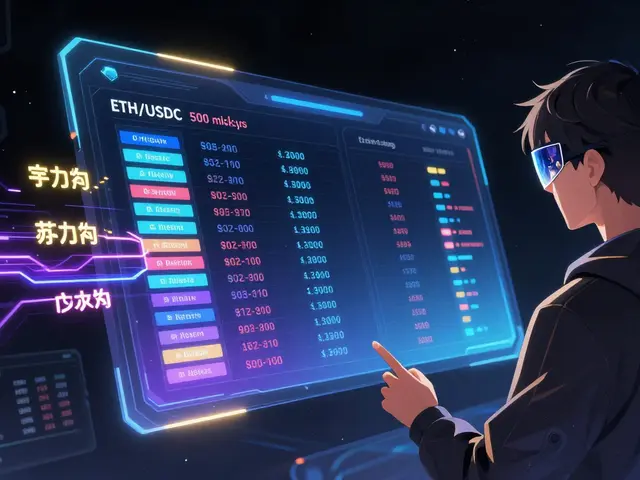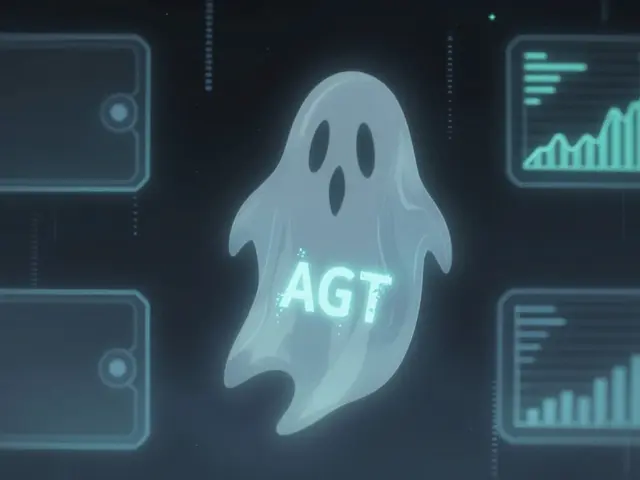MiCA Capital Requirements Calculator
Calculate your minimum capital requirements under EU's MiCA regulations for Crypto-Asset Service Providers (CASP). Based on services you offer, we'll determine the required capital threshold.
Holding crypto assets for others
Buying and selling crypto assets
Converting crypto to fiat currencies
Providing investment advice
Issuing euro-backed stablecoins
Enter your selected services above, then click "Calculate" to see your minimum capital requirements under MiCA. Your firm needs at least:
- €150,000 for custody-only services
- €730,000 for full-service providers
Note: Some services may require higher capital depending on volume, while others may qualify for reduced requirements.
Your Minimum Capital Requirement
What Is MiCA and Why Does It Matter?
MiCA is the European Union’s first unified law regulating crypto assets across all 27 member states. Officially called the Markets in Crypto-Assets Regulation, it started rolling out in June 2024 and became fully active on December 30, 2024. Before MiCA, every EU country had its own rules. A crypto company in Germany had to follow different rules than one in France. That made it hard to grow, expensive to operate, and confusing for users. MiCA fixes that. Now, if a firm gets licensed in one EU country, it can operate across the entire bloc. No more jumping through 27 hoops.
It’s not just about paperwork. MiCA was built because the EU saw real dangers. In 2019, Facebook’s Libra project scared regulators - what if a private company issued a global digital currency backed by nothing but promises? Then came the market crashes, insider trading cases, and scams that wiped out savings. ESMA, the EU’s financial watchdog, found that nearly 1 in 5 crypto incidents between 2018 and 2020 involved market abuse. MiCA was designed to stop that. It’s not about killing innovation. It’s about making sure innovation doesn’t hurt people.
How MiCA Classifies Crypto Assets
MiCA doesn’t treat all crypto the same. It splits them into three clear buckets, each with its own rules:
- Asset-Referenced Tokens (ARTs) - These are stablecoins that track the value of multiple assets, like a mix of euros, US dollars, or even gold. Think of them as digital baskets. Under MiCA, they must hold 100% of their value in reserves - plus a 2% safety buffer. And those reserves? At least 60% must be cash or central bank money. No shady investments allowed.
- E-Money Tokens (EMTs) - These are simpler. They’re stablecoins pegged to just one fiat currency - usually the euro. Only banks or licensed e-money institutions can issue them. And yes, they must hold 100% backing in real euros. No algorithmic magic. No floating value. Just direct, transparent backing.
- All Other Crypto Assets - This includes Bitcoin, Ethereum, and most utility tokens. These aren’t stablecoins. They’re speculative. For these, issuers must publish a white paper. Not a marketing brochure. A real document with details: how the tech works, who’s behind it, what the tokens do, and what could go wrong. If you skip this, you could be fined up to 15% of your annual revenue.
This classification matters because it determines what rules apply. A company issuing a euro-backed stablecoin faces stricter controls than one launching a new DeFi token. That’s intentional. MiCA matches the risk to the regulation.
Who Needs a MiCA License?
If you’re offering any crypto service inside the EU, you need a license. That includes:
- Custody services (holding crypto for others)
- Trading platforms (buying and selling crypto)
- Exchange services (converting crypto to fiat)
- Advisory services (giving investment advice)
- Stablecoin issuance
These companies are called Crypto-Asset Service Providers (CASPs). To get licensed, you need to apply to your country’s National Competent Authority - BaFin in Germany, AMF in France, CNMV in Spain, or CONSOB in Italy. The minimum capital requirements vary:
- €150,000 for custody-only services
- €730,000 for full-service providers (trading, custody, exchange, etc.)
It’s not just about money. You also need solid IT security, clear internal controls, a business continuity plan, and real-time transaction monitoring. ESMA says 68% of early license applications were rejected - mostly because firms didn’t have proper risk systems in place. Getting licensed isn’t easy. It takes 9 to 12 months on average. And you’ll need 6 to 9 months just to prepare.

How MiCA Compares to Other Regions
The U.S. has a mess. The SEC, CFTC, OCC, and state regulators all claim power over crypto. No one’s in charge. That’s why 83% of cross-border crypto firms said they faced regulatory uncertainty in the EU’s own 2020 study.
Japan’s rules focus mostly on exchanges. Switzerland lets companies self-certify under principles, not strict rules. MiCA is different. It’s a full system - from issuance to trading to custody - under one roof. And it has something no other region has: the passporting system. A license in Portugal? Valid in Poland, Finland, and Romania too.
But MiCA isn’t perfect. Critics say it’s too rigid. Ripple’s legal chief called the white paper requirement for utility tokens a "disproportionate barrier." Some startups say the €730,000 capital requirement shuts them out. EY’s 2024 survey found 78% of small crypto firms see MiCA as a barrier to entry. Meanwhile, big players like Coinbase and Bitstamp are thriving - they’ve got the resources to comply.
And then there’s the stablecoin ban. MiCA outright prohibits algorithmic stablecoins - the kind that try to stay pegged using code, not cash. The EU says they’re too risky. The U.S. and UK are still debating them. The ECB says MiCA’s approach reduces systemic risk by 63%. But Harvard’s Mark Roe argues it’s overreach - innovation killed before it even starts.
What’s Happening on the Ground?
The numbers tell a clear story. In Q4 2023, there were 5,200 crypto service providers in the EU. By Q1 2025, that number dropped to 2,850. A 45% drop. But here’s the twist: the remaining firms are bigger, better capitalized, and trusted. The top 10 MiCA-compliant platforms now control 67% of EU trading volume - up from 48% in 2023.
Institutional investors are rushing in. Euroclear reported a 210% jump in institutional custody deals for MiCA-compliant assets in 2024. Why? Because now they know the rules. Banks, pension funds, and asset managers won’t touch crypto unless it’s regulated. MiCA gave them that confidence.
But not everyone is happy. A Reddit user from Berlin reported a 11-month wait for their license and €287,000 in compliance costs. PwC estimates the average cost for a mid-sized firm is €250,000-€500,000. Some firms are splitting operations - keeping their EU side compliant, but running non-compliant trading from outside the bloc. One Spanish exchange raised fees by 22% just to cover the cost.
Still, the benefits are real. The first MiCA-compliant euro stablecoin, launched in August 2024, saw a 35% drop in customer acquisition costs. Institutional investors jumped in, increasing participation by 28%. Trust matters. And MiCA built it.
What’s Next for MiCA?
MiCA isn’t finished. The European Commission submitted its first big update on December 30, 2024: a proposal to regulate NFTs. Not all of them. Only those that are liquid, fungible, or used like securities - roughly 15% of the market. That’s coming in 2026.
Then there’s AMLA - the new Anti-Money Laundering Authority - launching in 2026. It will directly supervise the biggest crypto firms, especially those moving over €100 million monthly. That’s 37 firms. They’ll need new reporting systems.
ESMA is also looking at DeFi. Right now, decentralized protocols are mostly outside MiCA’s reach. But a new "significant influence" test could bring some of them under regulation - possibly affecting 28% of current DeFi apps.
And by Q3 2026, MiCA might expand again to cover AI-driven crypto products. Imagine an algorithm that auto-trades crypto based on social media sentiment. That’s the next frontier. The EU wants to be ready.
Long-term, the EU expects its crypto market share to grow from 14% in 2023 to 22% by 2027. But warnings remain. The Bank of England says MiCA’s rigid categories could miss new asset types. The IMF says it’s robust - for now. The real test? How well it adapts as tech evolves.
What Should You Do If You’re Affected?
If you’re a crypto user in the EU: look for the MiCA logo. It means the platform is licensed, audited, and accountable. Your funds are safer.
If you’re a startup: get legal advice early. Don’t wait until you’re ready to launch. Start preparing 6-9 months before you apply. Use ESMA’s Interactive Q&A platform and the European Commission’s MiCA Implementation Portal - they’ve published 87 guidance documents so far.
If you’re a business outside the EU: if you want EU customers, you’ll need to comply. Many non-EU exchanges now run dual operations - one compliant, one not. But that’s expensive. The smarter move? Build for MiCA from day one. It’s becoming the global standard.
MiCA isn’t perfect. But it’s the clearest, most complete crypto rulebook in the world. It’s not about control. It’s about creating a market where innovation can thrive - without risking people’s money.
Is MiCA mandatory for all crypto businesses in the EU?
Yes. Any company offering crypto services - including custody, trading, exchange, or issuing stablecoins - within the EU must be licensed under MiCA. This applies whether the company is based in the EU or outside but serving EU customers. Operating without a license risks fines up to 15% of annual revenue and being blocked from EU markets.
Are Bitcoin and Ethereum covered by MiCA?
Yes, but differently. Bitcoin and Ethereum fall under the "all other crypto assets" category. They don’t need reserve backing like stablecoins, but their issuers (if any) must publish a white paper with full project details. For users and exchanges trading these assets, MiCA sets rules on transparency, market abuse, and platform conduct - not on the assets themselves.
Can I still use non-MiCA crypto platforms in the EU?
Technically, yes - but it’s risky. Many non-compliant platforms have stopped serving EU customers entirely. Those that still do may not offer the same protections. If something goes wrong - like a hack or fraud - you have no legal recourse under EU law. MiCA-licensed platforms must follow strict security, insurance, and reporting rules. Avoiding them means giving up those safeguards.
What’s the difference between ARTs and EMTs?
ARTs (Asset-Referenced Tokens) are backed by a basket of assets - like euros, dollars, or gold - and must hold 100% reserves plus a 2% buffer. EMTs (E-Money Tokens) are backed by just one fiat currency - usually the euro - and must hold 100% of their value in that currency. Only banks or licensed e-money institutions can issue EMTs, while ARTs can be issued by other firms if they meet the reserve rules.
Why does MiCA ban algorithmic stablecoins?
Algorithmic stablecoins try to stay pegged using code and market incentives, not real assets. When confidence drops, they can collapse - like TerraUSD did in 2022. MiCA bans them because the EU sees them as systemic risks. Unlike asset-backed stablecoins, they have no cash reserves to fall back on. The EU chose safety over experimentation, even if it means slowing innovation.
How long does it take to get a MiCA license?
On average, it takes 9 to 12 months from application to approval. But preparation takes 6 to 9 months before you even apply. You need to build IT systems, hire compliance staff, draft white papers, and set up reserve accounts. Many applications are rejected on first try - often due to weak risk management plans. Patience and preparation are key.
Will MiCA affect DeFi and NFTs?
Yes, but gradually. Currently, most DeFi protocols are outside MiCA’s scope because they’re decentralized. But ESMA is testing a "significant influence" rule that could bring some into regulation if they’re controlled by centralized teams. NFTs are also being reviewed - only those that are liquid, fungible, or used for investment (like fractionalized NFTs) may be covered, starting in 2026.












Louise Watson
November 7, 2025 AT 20:48 PMMiCA isn't perfect. But it's the first time anyone tried to actually protect people instead of just letting the market eat itself.
Simple. Clear. Necessary.
Liam Workman
November 9, 2025 AT 09:57 AMI love how the EU just said, 'Enough.' No more wild west. No more 'trust us, we’re decentralized' when the code crashes and your life savings vanish.
Yeah, it’s rigid. Yeah, it’s expensive.
But guess what? People are finally starting to trust crypto again. 🤝 That’s worth more than any 'innovation' that burns down a whole neighborhood.
Benjamin Jackson
November 11, 2025 AT 02:39 AMHonestly? I was skeptical. Thought this was just bureaucracy overkill. But after watching my cousin lose $40k to an algorithmic stablecoin that just… poofed? I’m all in. MiCA isn’t about stopping innovation. It’s about making sure innovation doesn’t come at the cost of real people’s lives.
Still hate the 12-month wait though.
Michelle Sedita
November 12, 2025 AT 19:16 PMThe distinction between ARTs and EMTs is legally precise and economically sound. The 100% reserve requirement, coupled with the 2% buffer, aligns with fiduciary standards in traditional finance. This is not overregulation-it is risk mitigation grounded in empirical failure.
Kevin Mann
November 13, 2025 AT 06:00 AMOkay, so let me get this straight: the EU banned algorithmic stablecoins because TerraUSD crashed? So now we’re punishing every future innovation because one dumb team didn’t know how to code? 🤦♂️
Meanwhile, in the U.S., we’re letting people trade memecoins on Twitter with no oversight-but at least we’re not forcing startups to hire 17 compliance officers just to say hello.
And don’t get me started on the €730k capital requirement. That’s not regulation-that’s a bribe to big banks. Coinbase laughs. Small devs cry. This isn’t protection. It’s a cartel.
And now they’re coming for DeFi next? 😭
Who’s next? The blockchain-based toaster? I’m not mad. I’m just disappointed.
Kathy Ruff
November 14, 2025 AT 16:26 PMI’ve worked in crypto compliance for 7 years. MiCA is the first framework that actually makes sense. The white paper requirement? Essential. The reserve rules? Non-negotiable. The passporting system? Genius.
Yes, it’s expensive. Yes, it’s slow. But look at the numbers: institutional capital is flooding in. Customer trust is up. Fraud is down. This isn’t bureaucracy-it’s the foundation of a real market.
Stop calling it overreach. Call it maturity.
Veeramani maran
November 15, 2025 AT 18:08 PMyo bro i think miica is kinda sus like why u need 730k just to run a exchange? like i got a friend in mumbai he run a bot on binance with 5000$ and make 20% a month, now he cant even apply cause of this stupid euro thing, and also white paper? bro its just a token bro its not a phd thesis 😅
Cydney Proctor
November 16, 2025 AT 08:37 AMOh, so now we’re treating crypto like it’s a bank? How quaint. The EU thinks it can control innovation with spreadsheets and compliance forms. How endearing. The next thing you know, they’ll require a notarized letter from your mother explaining why you want to hold Bitcoin.
Meanwhile, the rest of the world is building. The EU is just filing paperwork.
Ryan Inouye
November 16, 2025 AT 19:39 PMLet’s be honest. This isn’t about protecting consumers. It’s about the EU flexing its power. They don’t want crypto. They want control. And if you can’t pay €500k to play, you don’t get to play at all.
Meanwhile, the U.S. is letting startups innovate. China is building CBDCs. And the EU? They’re writing 87 guidance documents about how to spell 'stablecoin'.
They’re not regulating. They’re burying innovation under a pile of bureaucratic confetti.
John Doe
November 16, 2025 AT 21:49 PMYou think this is about safety? Nah. This is a trap. MiCA is the first step. Next they’ll track your wallet. Then they’ll freeze it. Then they’ll demand KYC on every NFT you mint. Then they’ll ban private keys. Then they’ll say ‘we’re sorry, but your Bitcoin is now a state asset’. This isn’t regulation. It’s the beginning of the end. I’ve seen this movie. And the villain always wears a suit.
They’re coming for your freedom. And they’re calling it ‘protection’.
Finn McGinty
November 18, 2025 AT 19:50 PMI applied for a MiCA license last February. Spent €287,000. Waited 11 months. Got rejected because my risk assessment didn’t include a 'stress test for lunar market collapse'.
They asked for a flowchart of how I’d respond if a solar flare took out our servers.
And then they said ‘please resubmit with three additional annexes’. I’m not a crypto entrepreneur anymore. I’m a compliance janitor.
And the worst part? My competitors who paid lobbyists got approved in 6 months. This isn’t regulation. It’s a tax on the honest.
Rob Ashton
November 19, 2025 AT 04:17 AMThe success of MiCA should not be measured by the number of startups that survived, but by the number of individuals who did not lose their life savings to fraudulent schemes. The 45% reduction in service providers is not a failure-it is a purification. The remaining 2,850 entities now operate with transparency, accountability, and legal clarity. This is the necessary evolution of a nascent industry into a responsible financial sector. We must prioritize systemic stability over speculative velocity. The future of finance is not chaos-it is structure.
Cierra Ivery
November 20, 2025 AT 01:41 AMWait, so MiCA bans algorithmic stablecoins because TerraUSD failed-but then allows ARTs with 60% cash reserves? So if a stablecoin is backed by 60% euros and 40%… I don’t know, gold bars in a vault in Luxembourg, that’s fine? But if it’s backed by an algorithm that uses a smart contract to adjust supply? That’s ‘systemic risk’? And yet, the euro itself is backed by… nothing but trust in the ECB? So the EU is okay with fiat being a trust-based system, but not crypto? That’s not logic. That’s hypocrisy. And you know what? I’m not even mad. I’m just… confused.